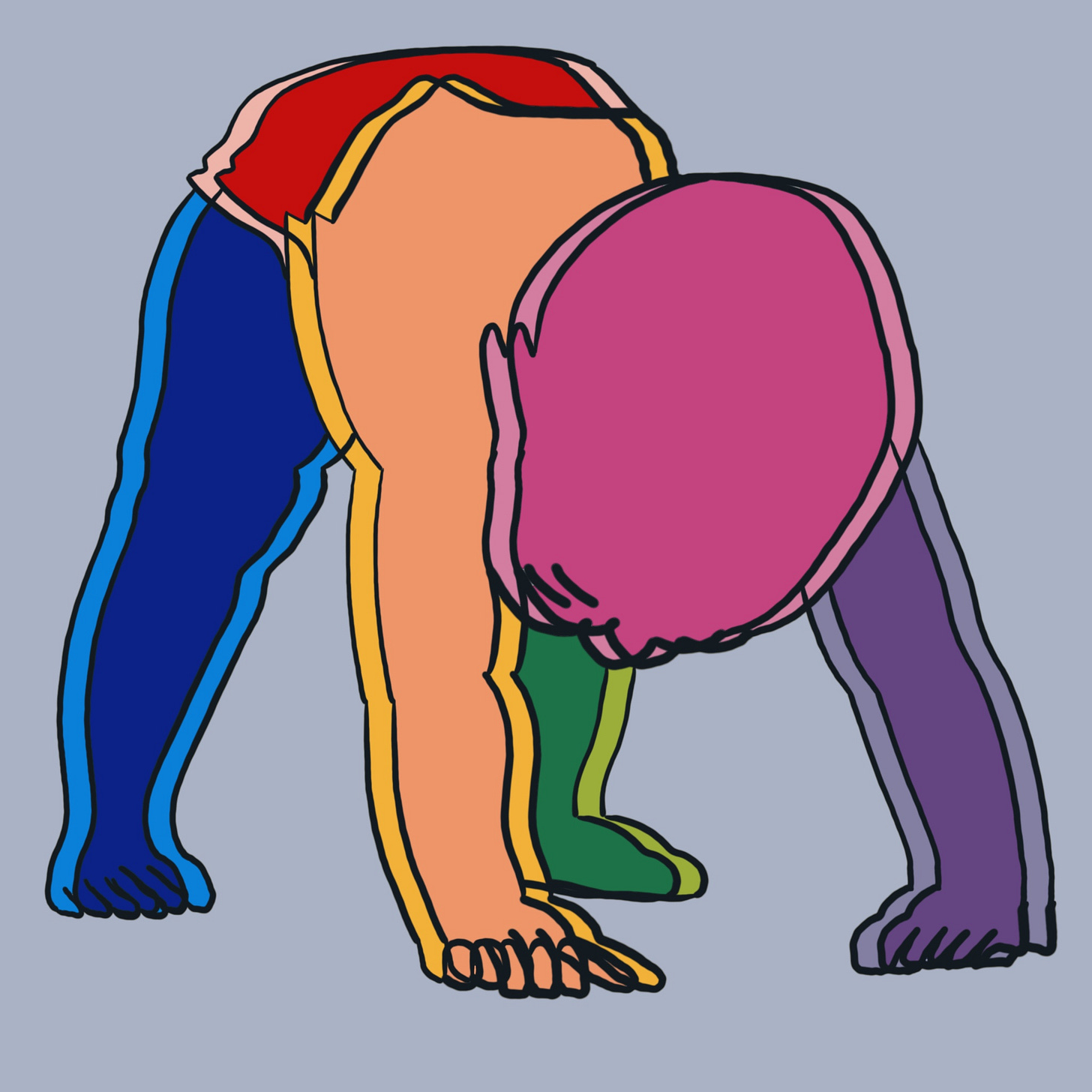Making Better Mistakes
Why we use variations in the Feldenkrais Method
When we're learning as kids, before we go to any kind of school, we learn to use ourselves by making mistakes. Trial and error.
For example, let’s say a baby is trying to put something into her mouth, and you watch her go through six or seven mistakes, putting the thing on her ear, her eye, on her forehead, her nose, on her chin, her other eye, and then finally she gets it into her mouth.
The next time she has the desire to put something in her mouth, maybe she goes through five mistakes before she finds satisfaction. Next time maybe three mistakes, until eventually she has a clear, repeatable idea about how to put something into her mouth.
In this context, errors and mistakes aren’t actually bad at all. In fact, the errors are what allowed her to get more clear about how to do what she wants. By learning through trials and errors and self-corrections, she wired into her brain a personal habit, a personal answer to the question, How do I put something in my mouth?
So some mistakes lead to a personal solution.
The organic learning process—trials and errors wiring a functional map of the body into the brain—is something that every human does, no matter what. Every human nervous system gets wired in through this kind of learning. Trying things and making distinctions about whether a certain outcome was closer to the intention or farther away.
This is as true for kids with brain injuries as it is for anyone else. What's different for kids with brain injuries is that they might not have access to sensing and feeling different parts of themselves. They might also process and integrate information in different ways.
In The Basic Situation, I talked about how a kid’s self-image takes shape based on what parts of herself she is able to use. The basic idea: if her access to sensations and perceptions of herself is limited by a brain injury or anything else, then her learning process will work around the blank spots to develop a self image that is personally meaningful (the best she can manage) but also incomplete. For a kid with a really incomplete self-image, some habits formed through her available set of trials and errors may turn into developmental cul du sacs.
If we’re going to call any habit a “mistake,” we need to distinguish that from the productive trials and errors I was talking about before. Maybe a habit can be mistaken in the sense that it don’t lead anywhere or it results in physical wear-and-tear, but that doesn’t take away from the fact that it’s meaningful to the person who put it together. Any habit is a personal solution, and it can be nice to live in a quiet cul du sac.
One of the core ideas of the Feldenkrais Method is: we’re looking back at the organic, spontaneous learning process we see in the early lives of each human, and we’re trying to rekindle and spark the same organic, spontaneous learning process in someone who’s farther down the path, who already has habits.
To interrupt and reshuffle habits, we actually need to generate more of those early kinds of mistakes that helped when we were first exploring and mapping our self. We need to re-discover the process of exploring “How do I do this?”
For a kid with limited access to her own sensations and perceptions—and for anyone who has movement habits that need shuffling, btw—the trick is to generate more of those early, illuminating mistakes in novel contexts. In Feldenkrais lingo, we call this creating variations. We guide kids (and other folks) into various movement situations that imply new goals and new challenges. We work to bring in unexplored parts and make available new coordinations for the primal learning process to consider.
The way this looks is different for each child, but the basic idea is to approach already familiar positions from different directions and then introduce novel, developmentally appropriate movement situations the child hasn’t discovered on her own yet. With all variations, we introduce them in slow and subtle ways, tailored to each child, so they can start to sense and feel what each new variation implies.




"Wiring a functional map of the body into the brain." I love that.
I enjoy seeing an infant succeed with the desired action of putting something into their mouth...and then they reveal by their facial expression that the thing itself is not what they desired to have in their mouth.